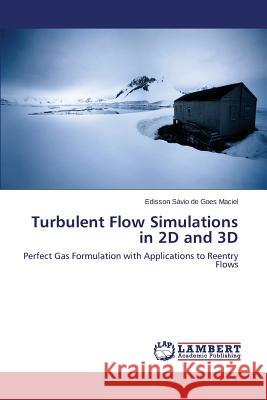Turbulent Flow Simulations in 2D and 3D » książka
Turbulent Flow Simulations in 2D and 3D
ISBN-13: 9783659564154 / Angielski / Miękka / 2015 / 564 str.
This book was written to students and engineers that like the Computational Fluid Dynamics (CFD) area; in other words, that like of programming algorithms to the resolution of physical problems. Some familiarity with code programming is required. However, through the computation courses teaching at the Universities the engineering student and common areas will have the capacity of programming the codes and turbulence models presented in this book and much more of his/her interest. The engineers are understood with some experience in programming, therefore, the application of the algorithms is right. The applications of this book aim aeronautical and aerospace problems. This book describes nineteen turbulence models to be applied considering the perfect gas formulation. Zero-equation, one-equation, and two-equation models are studied, ranging from the zero-order model of Cebeci and Smith to the k-w non-linear two-equation model of Rumsey, Gatski, Ying and Bertelrud. Two and three-dimensional spaces are considered. The Van Leer and Liou and Steffen Jr. schemes are employed. Good results are obtained in both studies. A finite volume formulation and structured discretization is used.
This book was written to students and engineers that like the Computational Fluid Dynamics (CFD) area; in other words, that like of programming algorithms to the resolution of physical problems. Some familiarity with code programming is required. However, through the computation courses teaching at the Universities the engineering student and common areas will have the capacity of programming the codes and turbulence models presented in this book and much more of his/her interest. The engineers are understood with some experience in programming, therefore, the application of the algorithms is right. The applications of this book aim aeronautical and aerospace problems. This book describes nineteen turbulence models to be applied considering the perfect gas formulation. Zero-equation, one-equation, and two-equation models are studied, ranging from the zero-order model of Cebeci and Smith to the k-w non-linear two-equation model of Rumsey, Gatski, Ying and Bertelrud. Two and three-dimensional spaces are considered. The Van Leer and Liou and Steffen Jr. schemes are employed. Good results are obtained in both studies. A finite volume formulation and structured discretization is used.











